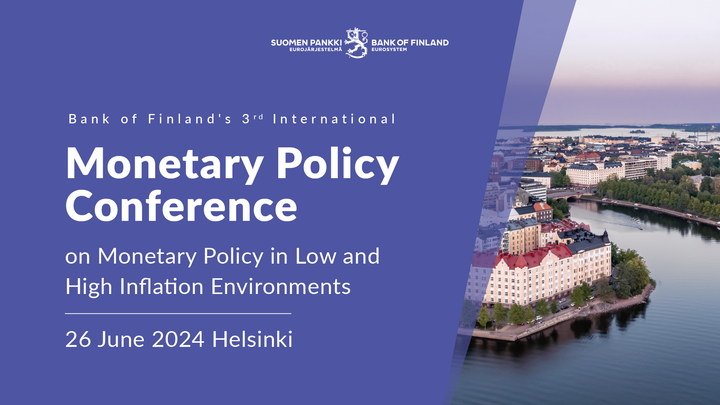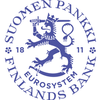Bank of Finland conference discussed monetary policy decision-making and implementation in low and high inflation environments
Going forward, the monetary policy strategy should be designed in a way that ensures price stability in the face of great uncertainty. This will require it to be flexible enough to work well in different environments and react to new and unknown shocks, Bank of Finland Governor Olli Rehn stressed on Wednesday at an international monetary policy conference organised by the Bank of Finland in Helsinki.

The international conference, held for the third time, discussed monetary policy in low and high inflation environments.
In his speech, Rehn discussed the exceptional inflation dynamics of the past crisis years and reflected on the main themes of the ECB’s upcoming monetary policy strategy review.
“For me, the experiences of recent years have, above all, highlighted the crucial role of inflation expectations in the making of monetary policy. Likewise, they have underscored the importance of a firm commitment to a medium-term inflation target in line with our strategy,” Rehn said.
Monetary policy analysis to support decision-making
In his speech, Governor of the Bank of Italy Fabio Panetta spoke about the outlook for monetary policy. According to Panetta, the main risks that the euro area may face in the medium term are a new wave of geopolitical shocks and increased political uncertainty within countries. Panetta expects, however, that, barring new upheavals, we will soon transition from the saga of the “last mile” to the reality of the “first smile” and the restoration of price stability.
Philip R. Lane, Chief Economist and Member of the Executive Board of the ECB, on the other hand, highlighted the role of modern monetary analysis at the ECB. According to Lane, extensive monetary analysis helps policymakers to form a better overall view of economic developments and to take into account the nexus of money, supply and demand of credit, and the real economy.
“Through expanding computation capacity and new machine learning techniques, the improved availability of granular data on financial intermediation is further broadening its scope and the relevance of its findings. For these reasons, monetary analysis plays a central role at the ECB,” Lane said.
In her speech, Annette Vissing-Jørgensen, Senior Adviser, Federal Reserve Board, spoke about the different factors that influence the optimal size of central bank balance sheets and how these factors differ between the euro area and the United States.
The event also included a topical discussion on monetary policy frameworks in low and high inflation environments. Participating in the discussion were Signe Krogstrup, Governor, Danmarks Nationalbank, Mārtiņš Kazāks, Governor, Latvijas Banka, and Hong K. Bahng, Director, Bank of Korea. The discussion was chaired by Tuomas Välimäki, Member of the Board, Bank of Finland.
Keywords
Links
Bank of Finland
The Bank of Finland is the national monetary authority and central bank of Finland. At the same time, it is also a part of the Eurosystem, which is responsible for monetary policy and other central bank tasks in the euro area and administers use of the world’s second largest currency – the euro.
Subscribe to releases from Suomen Pankki
Subscribe to all the latest releases from Suomen Pankki by registering your e-mail address below. You can unsubscribe at any time.
Latest releases from Suomen Pankki
Referensränta och dröjsmålsräntor enligt räntelagen för tiden 1.1–30.6.202622.12.2025 13:30:00 EET | Pressmeddelande
Referensräntan enligt 12 § i räntelagen (633/1982) är 2,5 % för tiden 1.1–30.6.2026. Dröjsmålsräntan för denna period är 9,5 % per år (referensräntan med tillägg för sju procentenheter enligt 4 § i räntelagen). Den dröjsmålsränta som tillämpas i kommersiella avtal är 10,5 % per år (referensräntan med tillägg för åtta procentenheter enligt 4 a § i räntelagen).
Korkolain mukainen viitekorko ja viivästyskorot 1.1.–30.6.202622.12.2025 13:30:00 EET | Tiedote
Korkolain (633/1982) 12 §:n mukainen viitekorko ajanjaksona 1.1.–30.6.2026 on 2,5 %. Viivästyskorko tänä ajanjaksona on 9,5 % vuodessa (viitekorko lisättynä korkolain 4 §:n mukaisella 7 prosenttiyksikön lisäkorolla). Kaupallisiin sopimuksiin sovellettavaksi tarkoitettu viivästyskorko on 10,5 % vuodessa (viitekorko lisättynä korkolain 4 a §:n mukaisella 8 prosenttiyksikön lisäkorolla).
Reference rate and penalty interest rates for 1 January – 30 June 202622.12.2025 13:30:00 EET | Press release
The reference rate under section 12 of the Interest Act (633/1982) for the period 1 January – 30 June 2026 is 2.5 %. The penalty interest rate for the same period is 9.5 % pa (under section 4 of the Act, the reference rate plus seven percentage points). The penalty interest rate applicable to commercial contracts is 10.5 % pa (under section 4 a of the Act, the reference rate plus eight percentage points).
Det är inte läge att skjuta upp lösningarna för Finlands offentliga finanser19.12.2025 11:00:00 EET | Pressmeddelande
Finlands offentliga finanser befinner sig alltjämt långt från balans. För att vända skuldsättningsutvecklingen krävs en betydande konsolidering av de offentliga finanserna och investeringar i tillväxt. Höjningen av de nödvändiga försvarsutgifterna försvårar den offentligfinansiella konsolideringen. Inflationen i euroområdet ligger på målet och ekonomin har vuxit något snabbare än förutsett.
Suomen julkisen talouden ratkaisuja ei kannata lykätä19.12.2025 11:00:00 EET | Tiedote
Suomen julkinen talous on edelleen kaukana tasapainosta. Velkaantumiskehityksen kääntäminen vaatii merkittävää julkisen talouden sopeuttamista ja investointeja kasvuun. Välttämättömien puolustusmenojen kasvattaminen vaikeuttaa tasapainottamista. Euroalueella inflaatio on tavoitteessa ja talous on kasvanut hieman ennustettua paremmin.
In our pressroom you can read all our latest releases, find our press contacts, images, documents and other relevant information about us.
Visit our pressroom